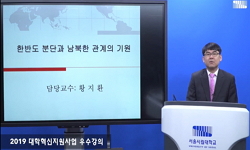This research aims to demonstrate the way in which the military governor emerged. Scholarly attention has been devoted to the emergence and the divide and rule of 藩鎭 (military provinces) as a critical role. However, a detailed examination of why t...
http://chineseinput.net/에서 pinyin(병음)방식으로 중국어를 변환할 수 있습니다.
변환된 중국어를 복사하여 사용하시면 됩니다.
- 中文 을 입력하시려면 zhongwen을 입력하시고 space를누르시면됩니다.
- 北京 을 입력하시려면 beijing을 입력하시고 space를 누르시면 됩니다.

唐代 行軍 운영의 변화와 節度使의 출현 = The Change of the Expeditionary Army System and the Emergence of the Military Governor in the Tang Dynasty
한글로보기https://www.riss.kr/link?id=A108739741
-
저자
이기천 (서울대학교 인문학연구원)

- 발행기관
- 학술지명
- 권호사항
-
발행연도
2023
-
작성언어
Korean
-
주제어
節度使 ; 行軍 ; 一擧滅之 ; 逗留不進 ; 蕃將 ; 唐 高宗 ; 武則天 ; 吐蕃 ; 韓半島 ; military governor ; expeditionary army ; single knockout blow ; delay and stay ; foreign general ; Emperor Gaozong ; Empress Wu Zetian ; Tibetan empire ; Korean peninsula ; 절도사 ; 행군 ; 일거멸지 ; 두류부진 ; 번장 ; 당 고종 ; 무측천 ; 토번 ; 한반도
-
등재정보
KCI등재
-
자료형태
학술저널
-
수록면
49-118(70쪽)
- 제공처
-
0
상세조회 -
0
다운로드
부가정보
다국어 초록 (Multilingual Abstract)
This research aims to demonstrate the way in which the military governor emerged. Scholarly attention has been devoted to the emergence and the divide and rule of 藩鎭 (military provinces) as a critical role. However, a detailed examination of why the Tang court established the military governor system has been little discussed in previous scholarship. This paper explores the expeditionary army organized for foreign war in the structure of military countermeasures of the Tang court, focusing on the record that says the military governor originally originated from the defense army of the frontiers. This paper examines the changes in the organization of the expeditionary army from the third year of Zhengguan (629) to the 700s, just before the appearance of the military governor.
The prolongation of the expeditionary army after the reign of Emperor Gaozong is the most significant change in the operation of the expeditionary army. During the reign of Emperor Taizong, the operation of the expeditionary army was characterized by “一擧滅之” (a single knockout blow), which means assembling the military force to attack the enemy’s headquarters and win a war in a short period of time. While it took an average of 174.9 days to organize and disband an expeditionary army during Emperor Taizong’s reign, it extended to 604.3 days during Emperor Gaozong’s reign. After the reign of Emperor Ruizong, a period of the expeditionary army lasted for more than a year, and the expeditionary army’s “逗留不進” (to tarry and not to move forward) continued. Although there is no detailed record of the expeditionary army’s engagement and its results in the 700s, it indicates that the original characteristic of the expeditionary army—being sent beyond the front to fight the war—had weakened.
One of the main reasons for prolonging the expeditionary army was “實無好將” (not having a good general), which Emperor Gaozhong also recognized. In the 650s, people who lacked military capability filled the absence of “好將 (good general)”. As a result, the expeditionary force was reorganized in the course of the battle or had unexpected results that the officer of the expeditionary army did not achieve the initial goal, but aided the enemy. A distrust of 蕃人(non-Han Chinese) lessen the recruitment of foreign troops. It led to aggravate the burden of Equal Field Farmers' military service, and also affected the supply of military provisions.
In the 660s, when the Tang attacked the Korean peninsula, the Tibetan empire attacked the frontier of Hexi, resulting in the extension and consolidation of the Tang front line to the west. As a countermeasure to this problem, the Tang court made the characteristic of the expeditionary army to turn temporary troops at the front into stationary troops in military operation areas. This process of transformation of the expeditionary army passed through four stages in a progressive manner. Finally, 使職 Shizhi was gradually replaced by 行軍大總管 (commander-in-chief of expeditionary army), and it reached the early stage of the establishment of the military governor system.
동일학술지(권/호) 다른 논문
-
- 중국고중세사학회
- 김광림
- 2023
- KCI등재
-
- 중국고중세사학회
- 정병준
- 2023
- KCI등재
-
- 중국고중세사학회
- 홍승현
- 2023
- KCI등재
-
唐 前期 戰捷 公布 儀禮와 그 성격 ― 獻俘禮ㆍ宣露布儀禮를 중심으로 ―
- 중국고중세사학회
- 김정식
- 2023
- KCI등재




 KCI
KCI DBpia
DBpia






